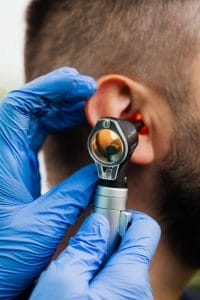Do Hearing Aid Batteries Expire?
Have you ever opened that kitchen drawer and found a little hoard of stuff you forgot you had? Maybe some stray rubber bands, a...
Posted on January 5, 2021
Hearing LossHave you ever wondered what the difference is between a hearing screening and a hearing evaluation?
Screenings are preliminary tests used to determine whether a patient has a hearing loss. Think of it as a pass/fail exam: If the results indicate a hearing loss, a more detailed evaluation is required.
On the other hand, evaluations are an in-depth series of tests conducted by an audiologist used to measure the type, degree and configuration of the impairment and identify the steps necessary for treatment.

A typical hearing evaluation may consist of any combination of the following tests: pure-tone (air conduction) audiometry, bone conduction testing, speech testing, inner ear testing (Auditory Brainstem Response, Otoacoustic Emissions) and middle ear testing (tympanometry, acoustic reflex).
The three main types of hearing impairments are conductive (outer or middle ear), sensorineural (cochlea and inner ear) or mixed (both conductive and sensorineural) hearing loss—all referring to each respective part of the hearing system that has been damaged.
The degree of hearing loss refers to its severity. Hearing loss is measured in decibels (dB) and ranges from normal (-10 to 15 dB) to profound (91+ dB). It is classified as follows:
Hearing loss configuration refers to the pattern of loss across frequencies, as charted on a patient’s audiogram—a visual representation of a patient’s hearing profile.
An individual whose loss affects the high tones is described as having high-frequency hearing loss; the configuration would show good hearing at lower pitches and poor hearing at higher pitches. Other types of hearing loss configurations include:
As you can see, hearing evaluations are much more dynamic than hearing screeners. However, both are equally crucial tools you and your audiologist can use to determine your best hearing care strategy. Without hearing screeners, we don’t even know where your hearing may stand.
Hearing screeners are quick, baseline maps imperative to the start of your better hearing journey. And the technology has evolved to the point where you can take one virtually, on your own schedule.
Want to give one a try to see where your hearing stands? Check out our FREE online screener tool, today!
Have you ever opened that kitchen drawer and found a little hoard of stuff you forgot you had? Maybe some stray rubber bands, a...
Tympanosclerosis is a post-inflammatory condition affecting the tympanic membrane, or eardrum, and middle ear. Tympanosclerosis can result in hearing loss or be asymptomatic and...
Otomycosis is a fungal ear infection affecting the outer ear. Fungal ear infections are less common than bacterial infections, making up 10% of all outer...
Ear pressure is the feeling that your ears are full, stuffy or plugged. Often compared to the sensation of having water in your ears,...